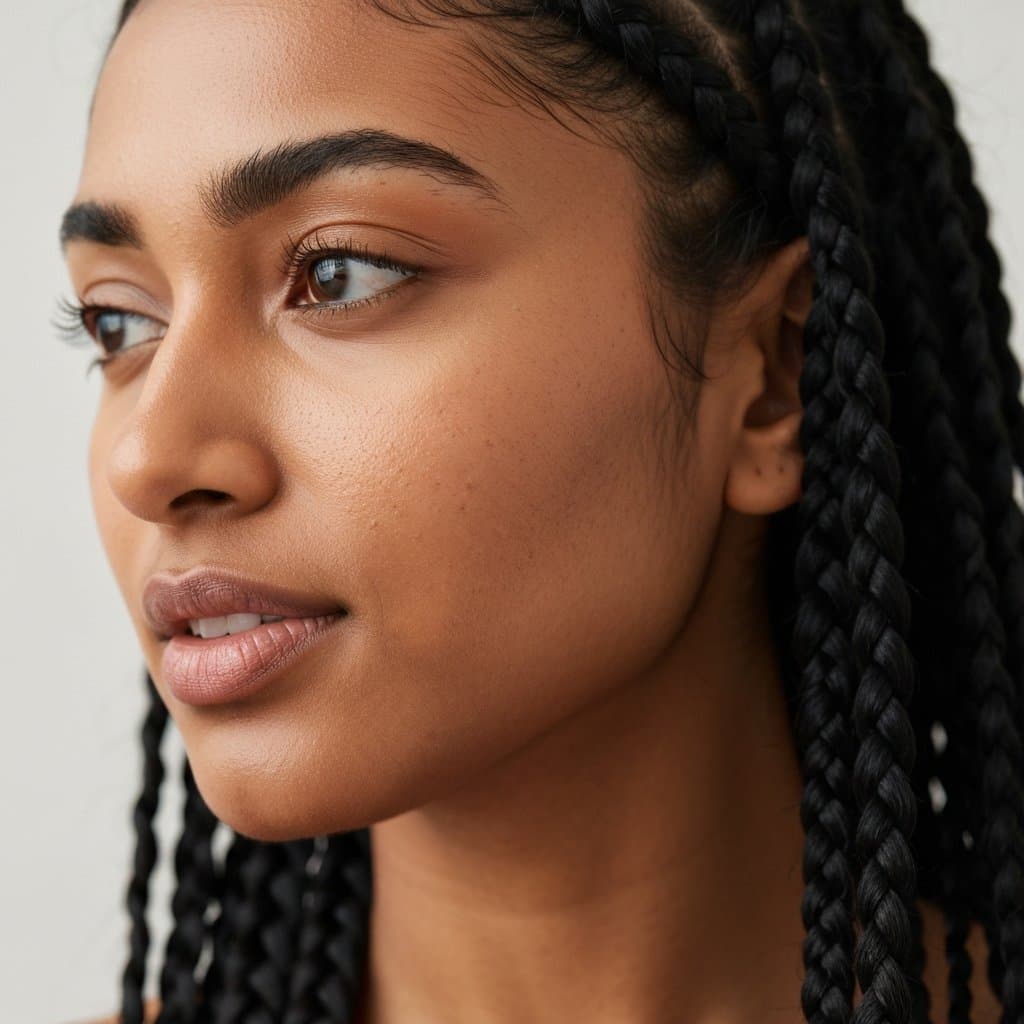Color vs. Cut: Which Should You Do First? | The Definitive Stylist Guide
The Ultimate Salon Question: Color vs. Cut, Which Comes First?
It's a question that echoes through hair salons everywhere: when you're ready for a total hair transformation, what's the first step? Should you get that fresh haircut before the new color, or does the color need to be applied first to achieve the perfect look? The great 'color vs. cut' debate isn't just a matter of preference; the sequence can dramatically impact the final result, the health of your hair, and even the cost of your service. While many believe there's a one-size-fits-all answer, the truth is far more nuanced, depending on your hair type, the specific cut and color you desire, and your stylist's professional technique.
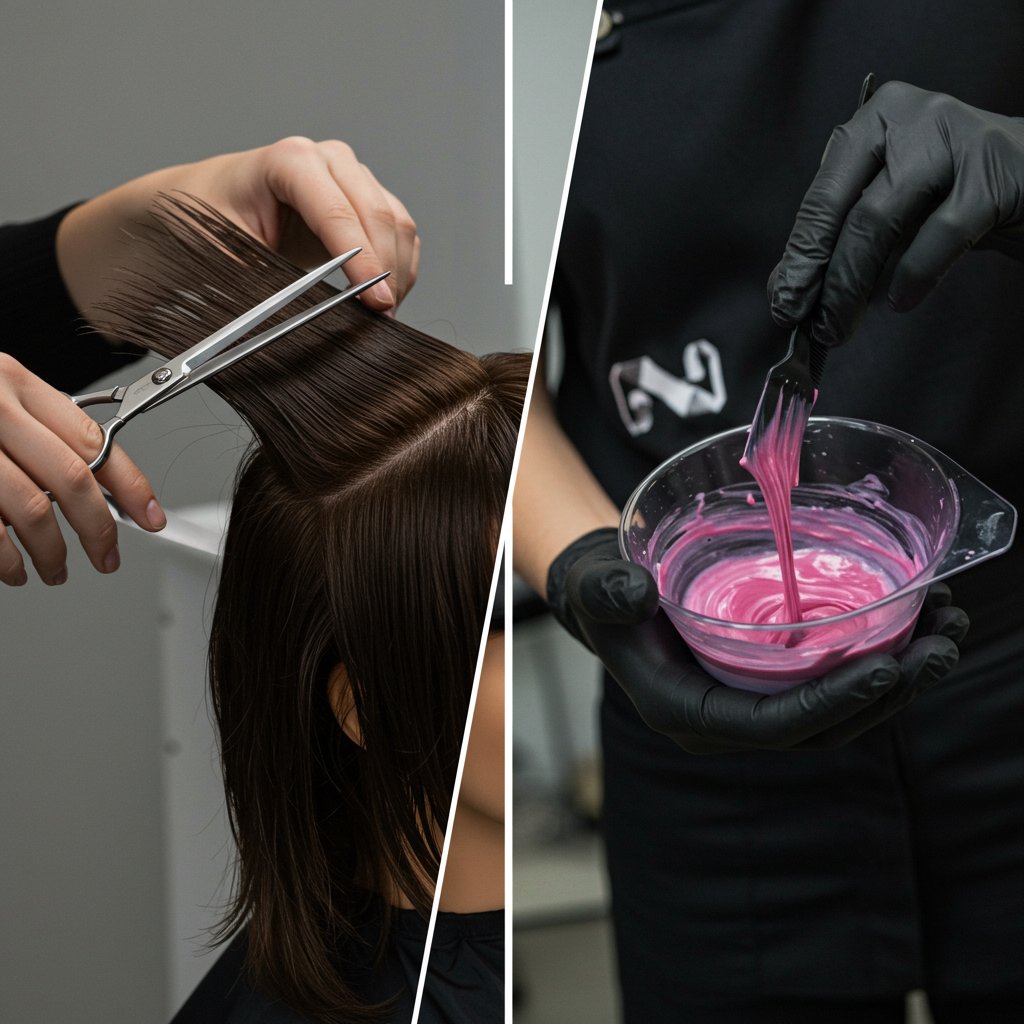
Understanding the logic behind the order of operations is key to ensuring you walk out of the salon with the hair of your dreams. A strategic approach ensures that your color perfectly complements your new shape, and your cut enhances the dimension and placement of your highlights or all-over hue. It prevents wasting time and expensive color product on hair that's destined for the salon floor and protects the integrity of complex color work. This comprehensive guide will break down every scenario, empowering you with the knowledge to have a more productive consultation with your stylist and achieve a flawless, cohesive look every single time.
The Strong Case for Cutting First: A Clean Canvas
For many stylists and a majority of salon appointments, cutting the hair first is the standard and most logical approach. Think of it as creating the perfect canvas before an artist begins to paint. This method is particularly crucial when you're making a significant change to your hair's length or shape. By establishing the final silhouette first, the stylist has a clear blueprint for color application, ensuring that every highlight, lowlight, or balayage piece is placed with intention and precision to enhance the new cut.
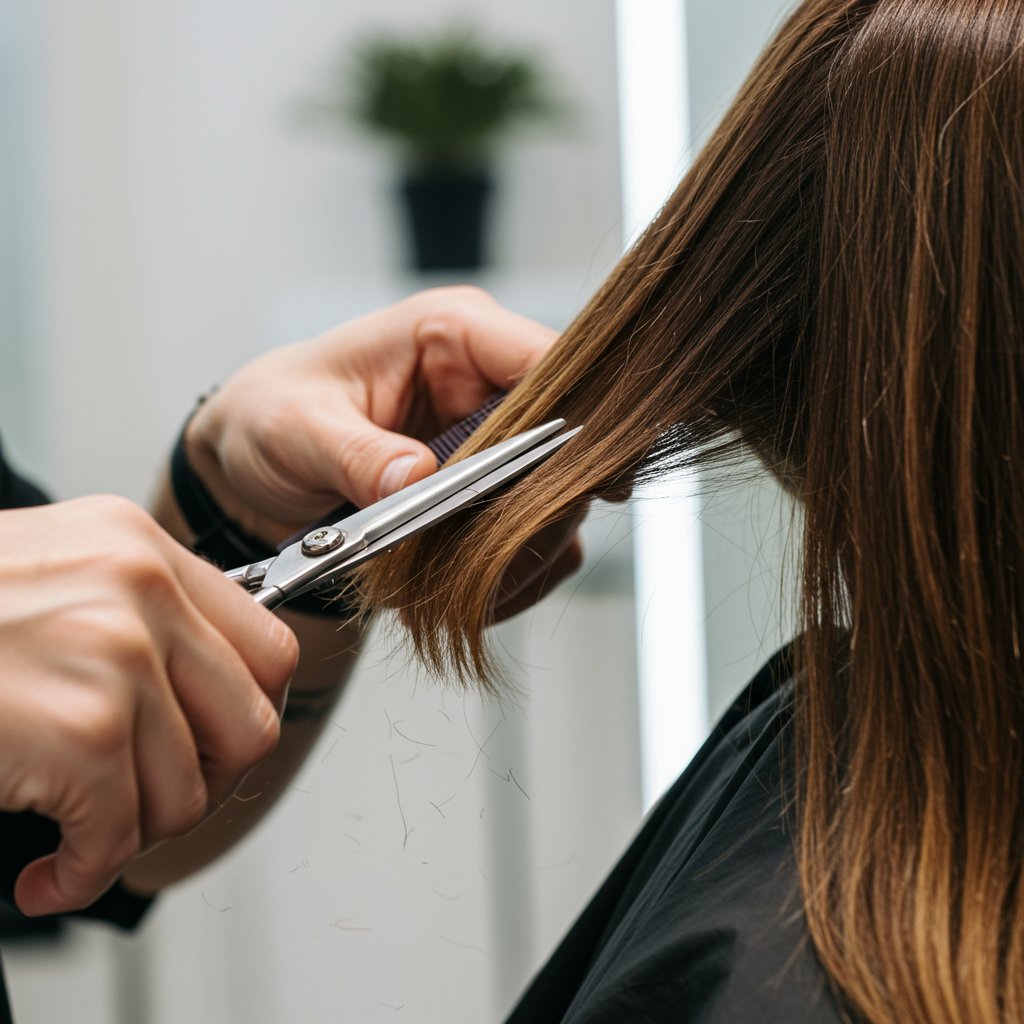
One of the most significant benefits of cutting first is the removal of dry, damaged, or split ends. Applying expensive, high-quality color to unhealthy ends that will just be snipped off is inefficient and wasteful. By trimming them away beforehand, the color is applied only to the healthy hair that will remain, resulting in a more vibrant, even, and longer-lasting color result. This is especially important for porous, damaged ends which can absorb color differently, leading to an uneven or muddy appearance. A pre-color cut ensures the hair's porosity is more uniform, allowing for a predictable and beautiful color outcome.
Furthermore, from a practical standpoint, cutting first saves both time and resources. Hair color is typically mixed based on the length and density of the hair. If a client with waist-length hair wants a chic bob, coloring it first would require a significant amount of product that would ultimately be cut off and discarded. This is not only economically inefficient for the salon but can also translate to a higher service cost for the client. Establishing the shape first allows the colorist to use the precise amount of product needed for the new style, streamlining the appointment and ensuring the cost is appropriate for the work being done.
Why a Pre-Color Cut is a Game-Changer
- Precision Color Placement: When the final shape is defined, your colorist can strategically place foils or hand-paint highlights to accentuate the layers, angles, and movement of your new haircut. For a graduated bob, for instance, color can be placed to emphasize the sharp lines, something that would be impossible to predict on long, uncut hair.
- Healthier Hair Foundation: Starting with a fresh cut means the color is applied to the healthiest possible version of your hair. This not only improves the final look but also the long-term health and integrity of your strands, as the most damaged portions have already been removed.
- Efficiency and Accuracy: It's the most straightforward path to the desired result. The cut is the foundation, and the color is the art that enhances it. This order minimizes guesswork and ensures the vision discussed during the consultation is executed flawlessly.
When to Color First: The Art of Balayage and Major Transformations
While cutting first is often the default, there are specific, artist-driven scenarios where applying color before the scissors even make an appearance is non-negotiable. These situations typically involve specialized, freehand coloring techniques where the stylist needs to see the full length and natural movement of the hair to create a seamless, sun-kissed effect. The most prominent example is balayage, a technique that involves sweeping or painting lightener onto the surface of the hair to create a soft, natural-looking gradient.
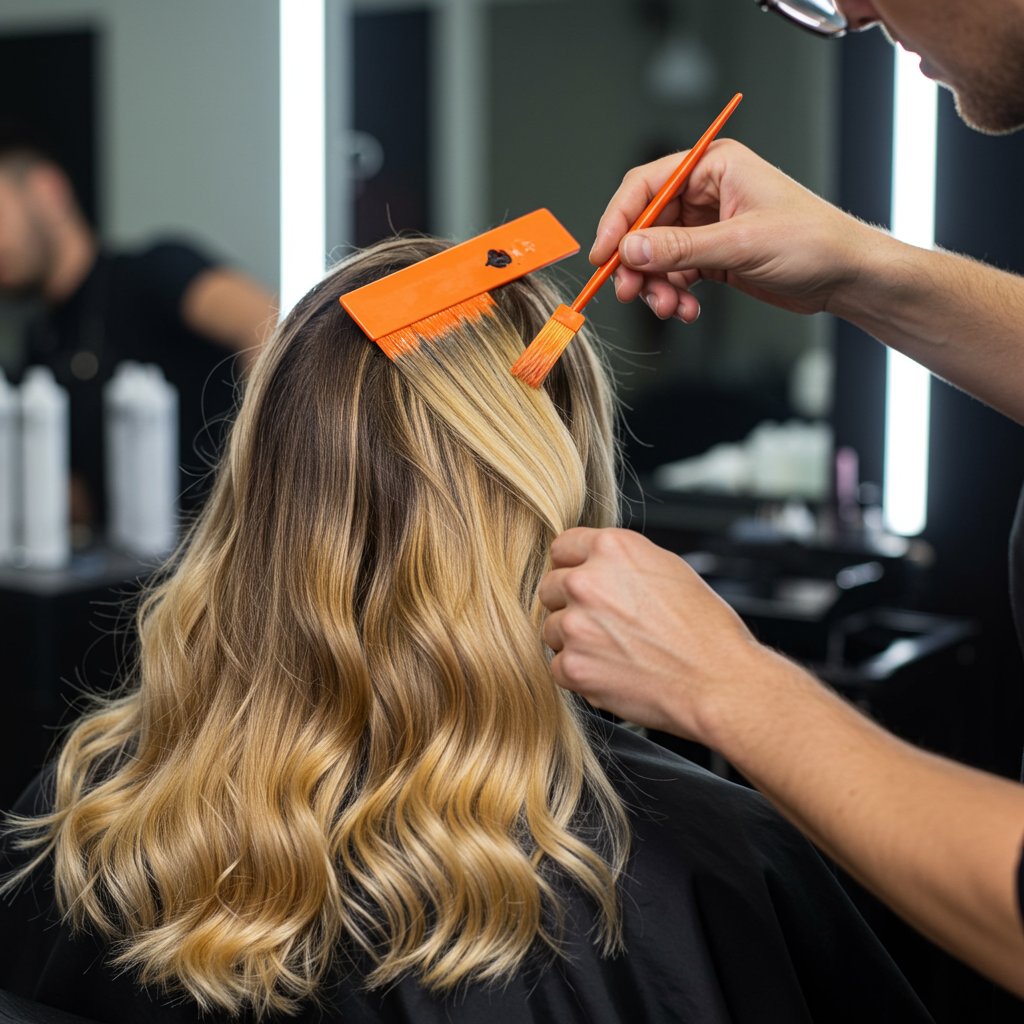
For a successful balayage, the colorist needs to visualize how the light will naturally hit the hair. This requires working with the hair's full length to create a fluid transition from the roots to the ends. If the hair were cut into layers first, it would disrupt the flow and make it difficult to paint those long, sweeping strokes that are characteristic of the style. By coloring the hair first and then cutting it, the stylist can ensure the beautifully blended highlights fall exactly where they should, creating a dimensional and cohesive look. The trim or cut afterward is more of a 'dusting' or shaping process to complement the pre-existing color design.
Another instance where coloring first might be preferred is during a major color transformation, such as going from a very dark brunette to a light blonde. This process can be intensive and potentially damaging. A stylist may want to assess the hair's condition and the final color result before committing to a drastic cut. Seeing the final hue allows both the client and stylist to make a more informed decision about the haircut that will best showcase the new color and maintain the hair's health. Sometimes, seeing that vibrant new shade inspires a different or bolder cut than originally planned.
Scenarios That Demand a 'Color First' Approach
- Balayage and Ombré: These freehand painting techniques require the full canvas of the hair to create a seamless blend. Cutting afterward refines the shape without disturbing the artistic color placement.
- Creative or Vivid Colors: For complex patterns or color melts with fashion shades, the colorist often needs the entire hair shaft to work with to ensure the colors transition smoothly into one another.
- Client Indecision: If a client is certain about the color but hesitant about the cut, coloring first allows them to see their new shade and then decide on a shape that best complements it.
How Your Desired Hairstyle Dictates the Order
The specific haircut you're aiming for is a massive factor in the color vs. cut debate. Different styles have different requirements for how color should be integrated. A sharp, geometric cut demands a different approach than soft, flowing layers, and the order of services must adapt accordingly.
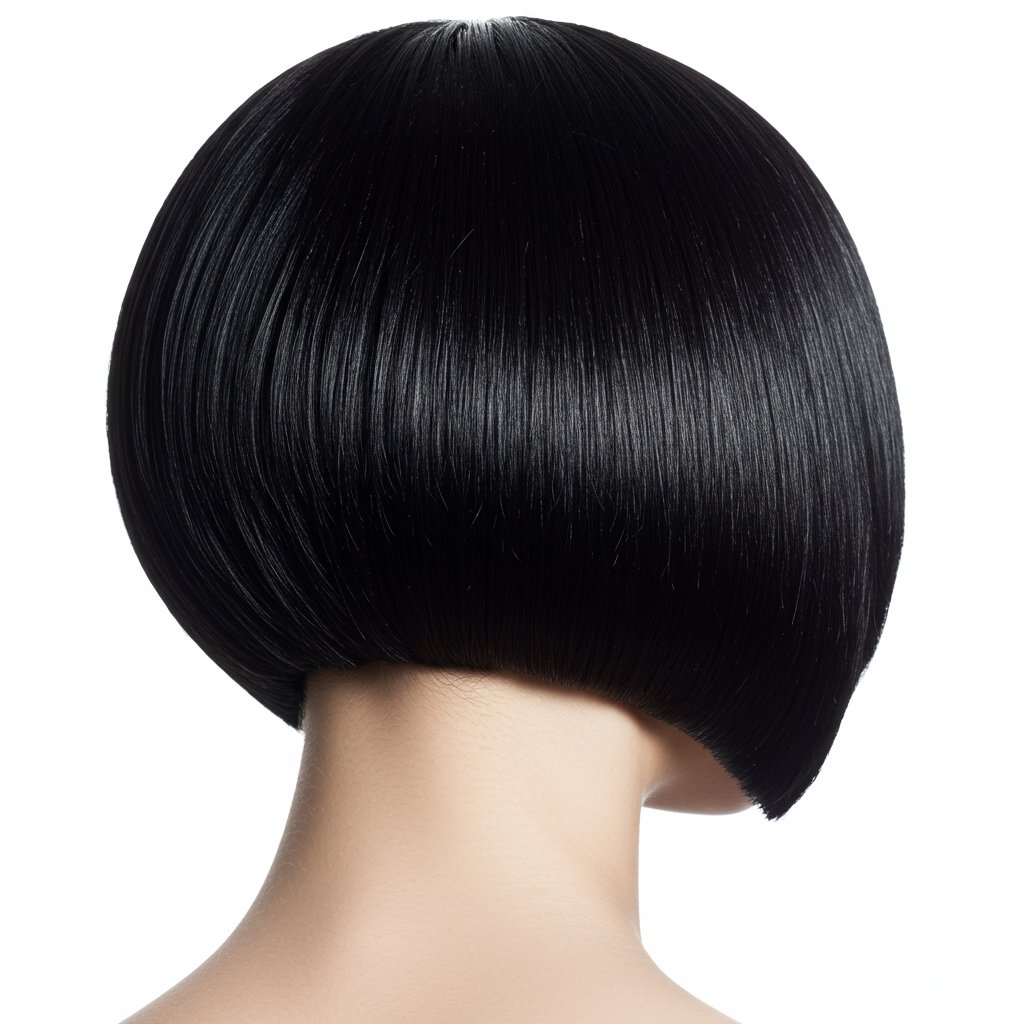
For precision haircuts like a classic bob, an A-line, or a sharp pixie cut, the verdict is almost unanimously cut first. The structure of these styles is paramount. The clean lines and distinct angles are the main features, and the color should serve to enhance them. A stylist will cut the shape with meticulous detail and then apply color to accentuate those lines, perhaps with a solid, glossy all-over color or a few strategically placed panels to create depth. Trying to color before a precision cut is like trying to paint details on a sculpture before it's been carved—the final result would be unpredictable and likely disjointed.
Conversely, for long, layered styles, especially those featuring a lived-in, beachy aesthetic, the decision is more flexible but often leans towards cutting first to remove weight and establish the basic shape. However, if the goal is a heavy balayage, the color may come first as discussed. For shag haircuts with lots of texture and movement, a stylist might perform the bulk of the cut, then apply color to make the layers pop, and finish with some final texturizing and refinement after the color is processed and dried. This hybrid approach allows for maximum customization.
The Influence of Hair Type and Condition
Your hair's natural texture and current health are critical variables in determining the right service order. A skilled stylist will assess your hair's unique characteristics during the consultation before deciding on a plan of action.
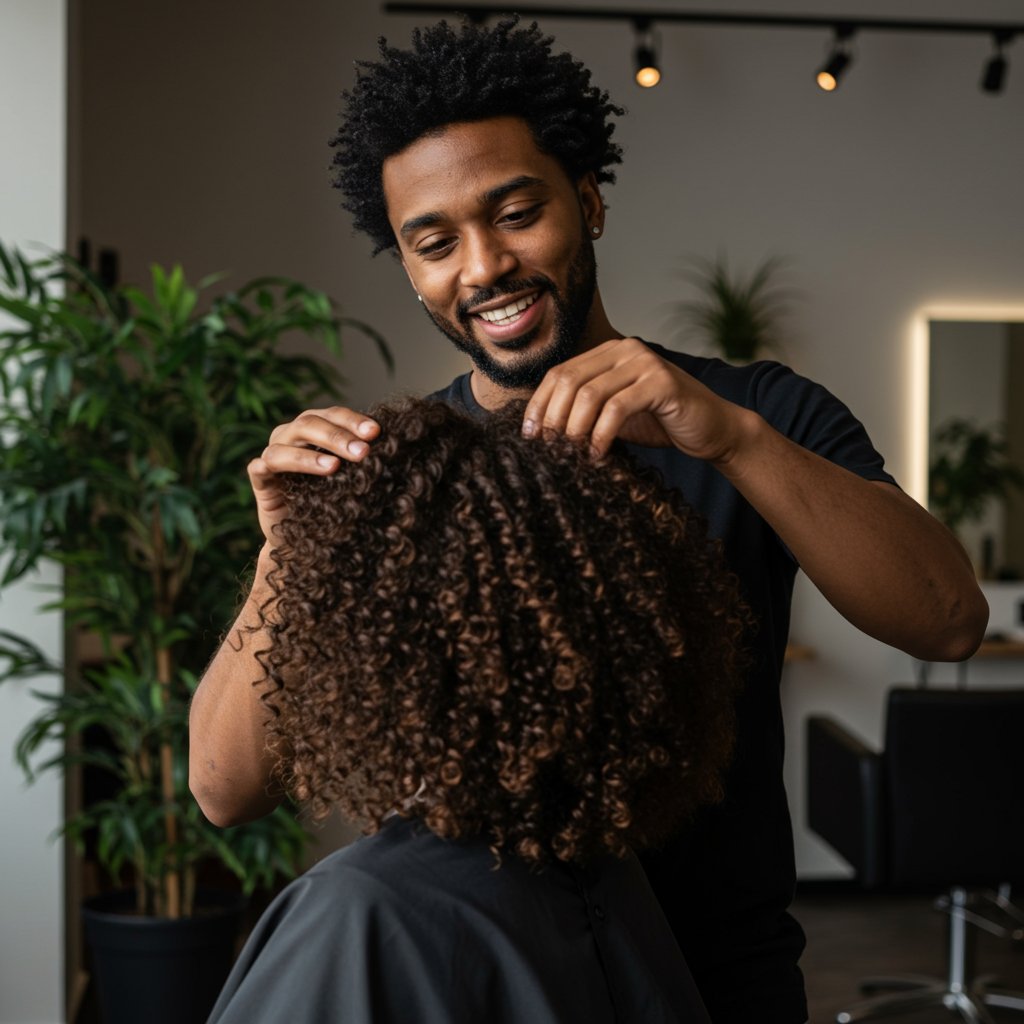
For those with very fine hair, cutting first can be beneficial as it allows the stylist to see the hair's natural fall and density without it being weighed down by color products. This helps in creating a shape that maximizes volume. For clients with extremely thick or coarse hair, cutting first can debulk the hair, making the color application process more manageable and ensuring even saturation.
Curly and coily hair types have their own set of rules. Many stylists who specialize in curls prefer to cut the hair dry, curl by curl, to create the desired shape based on the individual's unique curl pattern. This is almost always done first. Once the shape is perfected, the color can be applied, often using techniques that are specifically designed to enhance the dimension of curls without disrupting their pattern. Coloring wet, combed-out curly hair and then cutting it can lead to an unpredictable shape once it dries and shrinks back into its natural curl.
When it comes to hair condition, the answer is simple: if your hair is damaged with significant split ends, a cut is always the first priority. There is no benefit to applying chemicals to hair that is already compromised and needs to be removed. Starting with a healthy foundation by cutting off the damage ensures a better color result and is the first step on the journey back to healthy hair.
The Consultation: Your Stylist's Professional Verdict
Ultimately, the most important step in the entire process happens before any scissors or color brushes are picked up: the consultation. This is where the debate of 'color vs. cut' is settled for your specific situation. An experienced stylist will listen to your goals, analyze your hair type and condition, look at your inspiration photos, and formulate a professional plan that outlines the correct sequence of services to achieve your desired look safely and effectively.

During your consultation, be prepared to discuss your hair history, your daily styling routine, and your maintenance commitment. This information helps your stylist recommend a cut and color that not only looks great when you leave the salon but also works with your lifestyle. Trusting their expertise is key. They understand the science of hair color and the architectural principles of haircutting. If they recommend a specific order, it's based on years of training and hands-on experience aimed at delivering the best possible outcome while preserving the health of your hair.
Think of your stylist as your hair's architect and artist. They see the full picture and know which foundational steps must come first to build the final masterpiece. A thorough consultation ensures you and your stylist are on the same page, eliminating any surprises and setting the stage for a successful and relaxing salon experience. This collaborative conversation is the true secret to resolving the color vs. cut dilemma.
Pro Tips for Maintaining Your New Cut and Color
Once you've left the salon with your perfectly executed cut and color, the care routine at home becomes crucial for longevity and vibrancy. The investment in professional services deserves to be protected with a proper maintenance regimen.
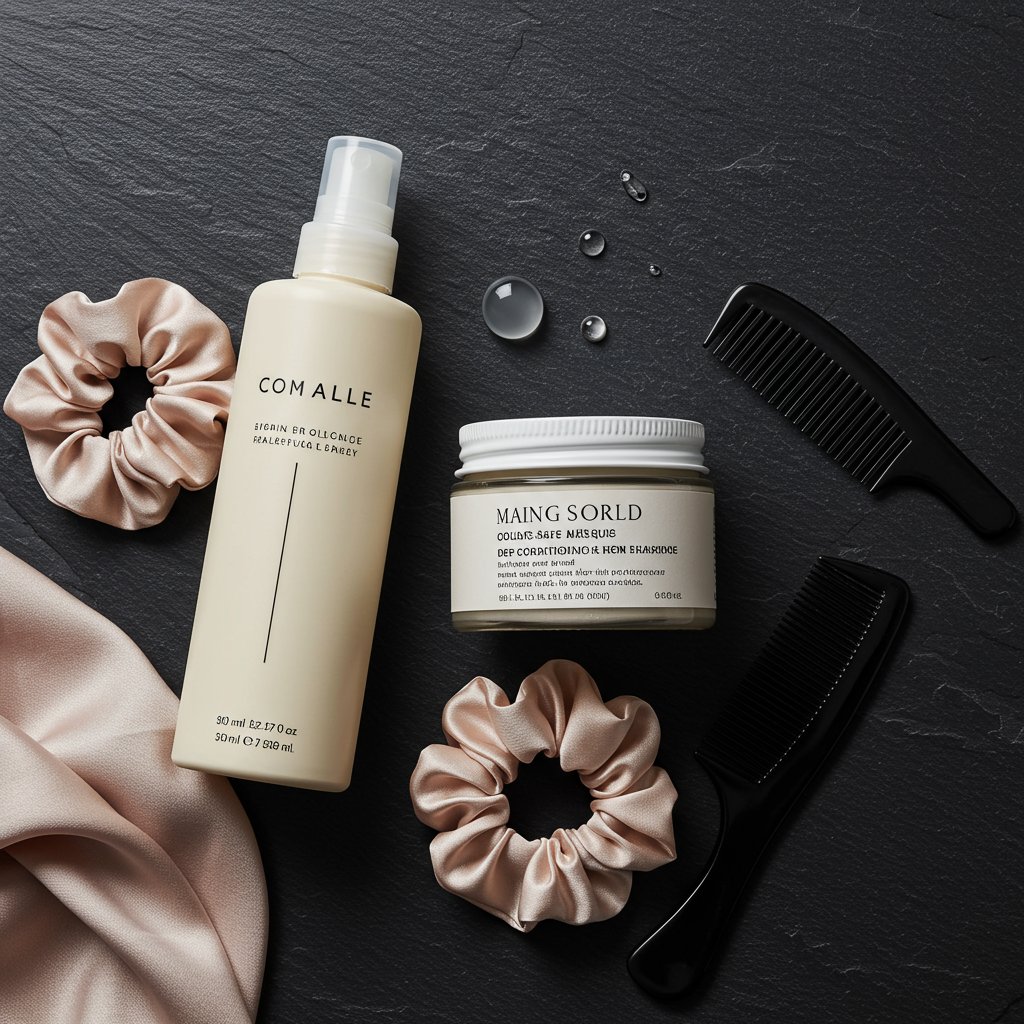
First and foremost, switch to high-quality, sulfate-free hair care products specifically designed for color-treated hair. Sulfates can strip color molecules from the hair shaft, leading to premature fading. A good color-safe shampoo and conditioner will gently cleanse while depositing moisture and sealing the cuticle to lock in your hue. Incorporating a weekly deep conditioning mask or a color-depositing gloss can also work wonders to replenish moisture and refresh your tone between salon visits.
Heat styling is one of the biggest culprits of color fading and damage. Always apply a thermal protectant spray before using blow dryers, flat irons, or curling wands. Whenever possible, let your hair air dry or use lower heat settings. Additionally, protect your hair from environmental factors. UV rays from the sun can bleach and fade your color, so consider using a UV protectant hair spray or wearing a hat during prolonged sun exposure. Following these simple steps will keep your cut looking sharp and your color looking brilliant for weeks to come.
Frequently Asked Questions (FAQ)
Q1: Does the order matter for a simple root touch-up and a trim?

A: For a standard root touch-up and a trim (just removing a half-inch or so), the order is less critical, but most stylists still prefer to cut first. This removes the split ends and confirms the shape before applying color only where it's needed. However, applying the root color first while the client waits for it to process and then cutting is also a common and efficient practice in many salons.
Q2: What about vivid or fashion colors like pink, blue, or green?
A: This depends on the desired effect. If you're getting a full head of a single vivid color, the hair will likely be lightened first, then the color applied, and then the cut to create the final shape. If you're getting creative placement, like peekaboo panels or a split dye, the stylist will absolutely need to cut the hair first to know exactly where to place the sections for maximum impact.
Q3: If I'm cutting my long hair into a short pixie, which comes first?
A: For a dramatic transformation like this, the cut should absolutely come first. There is no reason to color (and pay for coloring) several inches of hair that will immediately be cut off. Cutting the hair into the pixie shape first provides the perfect, short canvas for the colorist to work on.
Q4: How long should I wait between a cut and color if I get them done separately?
A: If you can't get them done on the same day, it's best to schedule the haircut first. You can get your color done anytime after the cut, from the next day to a week or two later. It's generally not recommended to get a major haircut right after a fresh color service, especially if it involves techniques like balayage where the color placement is dependent on the length.
Q5: Does cutting my hair after coloring make the color fade faster?
A: No, the act of cutting the hair does not cause color to fade. Fading is caused by factors like washing with harsh shampoos, sun exposure, and heat styling. However, a haircut can remove the colored ends of your hair, which might alter the look of a gradient style like an ombré or balayage if not done by the same stylist who understood the original vision.
Q6: Is it cheaper to get a cut and color at the same time?
A: Many salons offer package deals or bundles for clients receiving multiple services in one appointment, which can be more cost-effective than booking them separately. From a product-cost perspective, as mentioned earlier, cutting a significant amount of length off first will almost always be cheaper because the colorist will use less product.
Conclusion: The Final Verdict is a Professional One
The age-old question of 'color vs. cut' doesn't have a single, universal answer. The correct order is a tailored decision, strategically chosen by a professional stylist to best suit your hair type, your desired outcome, and the specific techniques being used. While cutting first is the prevailing logic for precision shapes and significant length changes, coloring first holds its own essential place for artistic techniques like balayage and major color overhauls.
The most important takeaway is the undeniable value of a thorough consultation. This is where your vision and your stylist's expertise merge to create a customized plan. By trusting in their professional judgment, you can set aside the debate and relax, confident that the sequence they choose is the one that will lead to stunning, healthy, and beautifully integrated results. The perfect hairstyle is a symphony of both cut and color, and a great stylist knows exactly how to conduct it.

